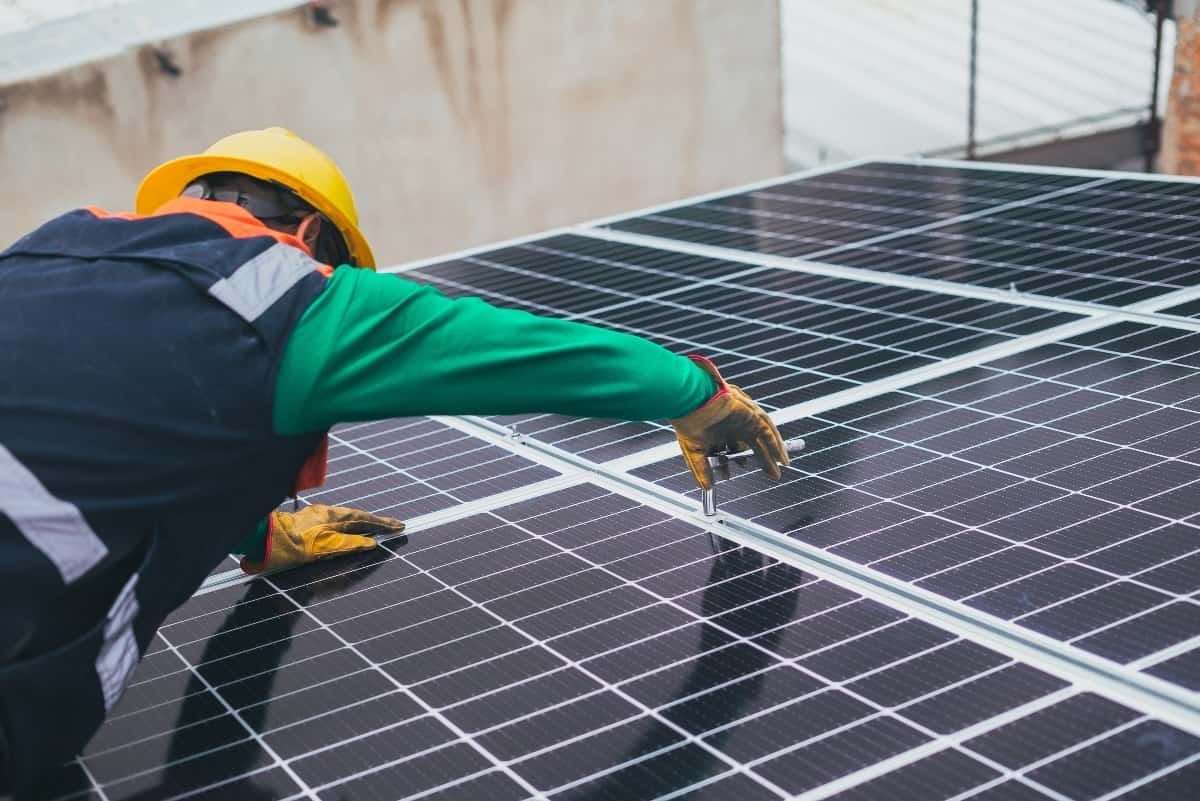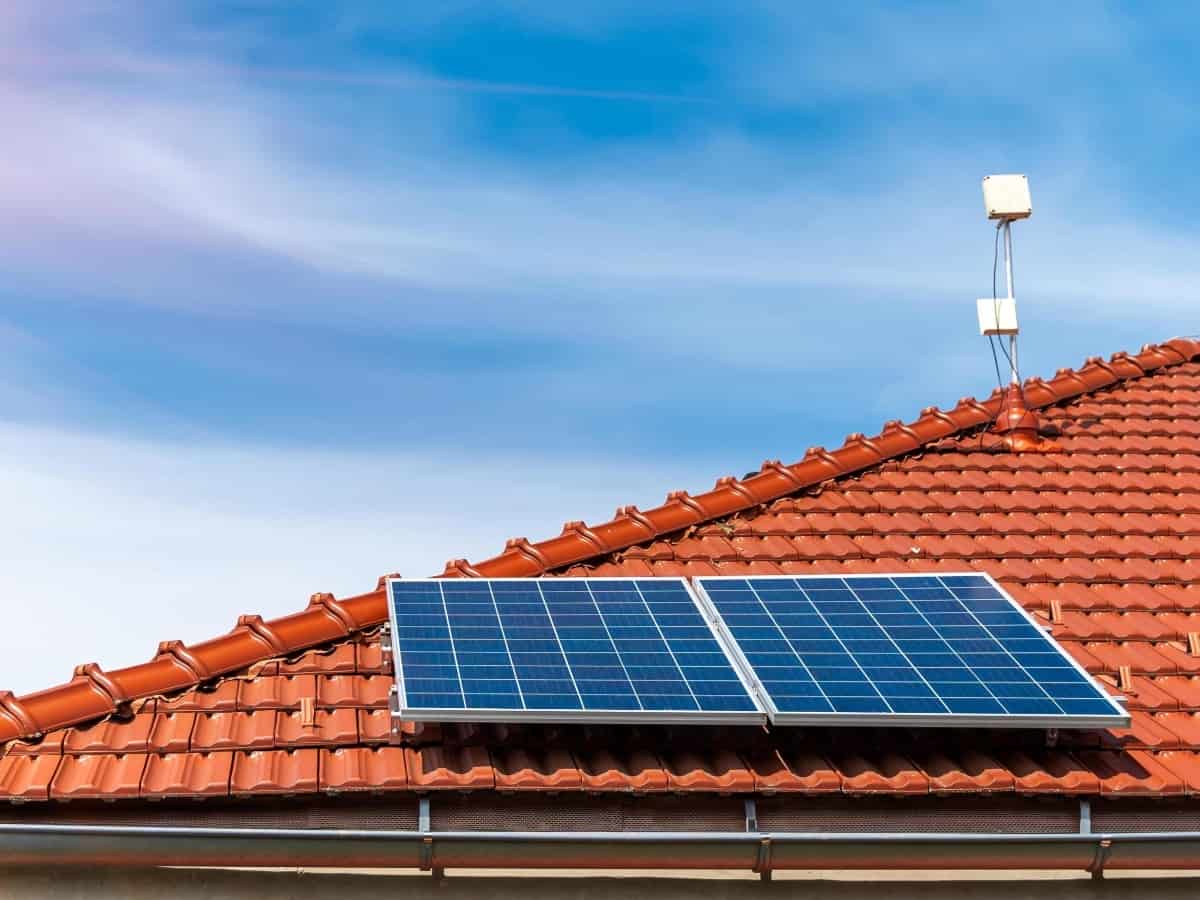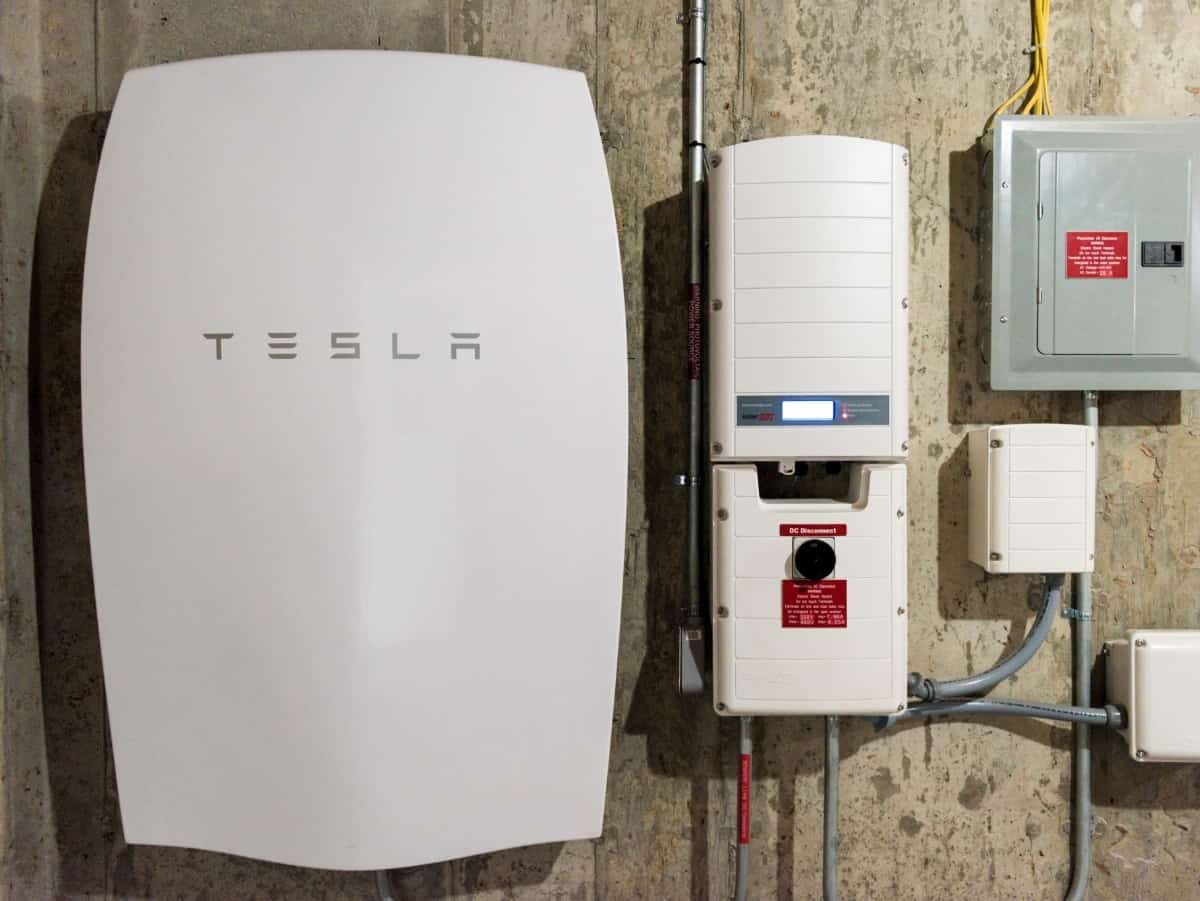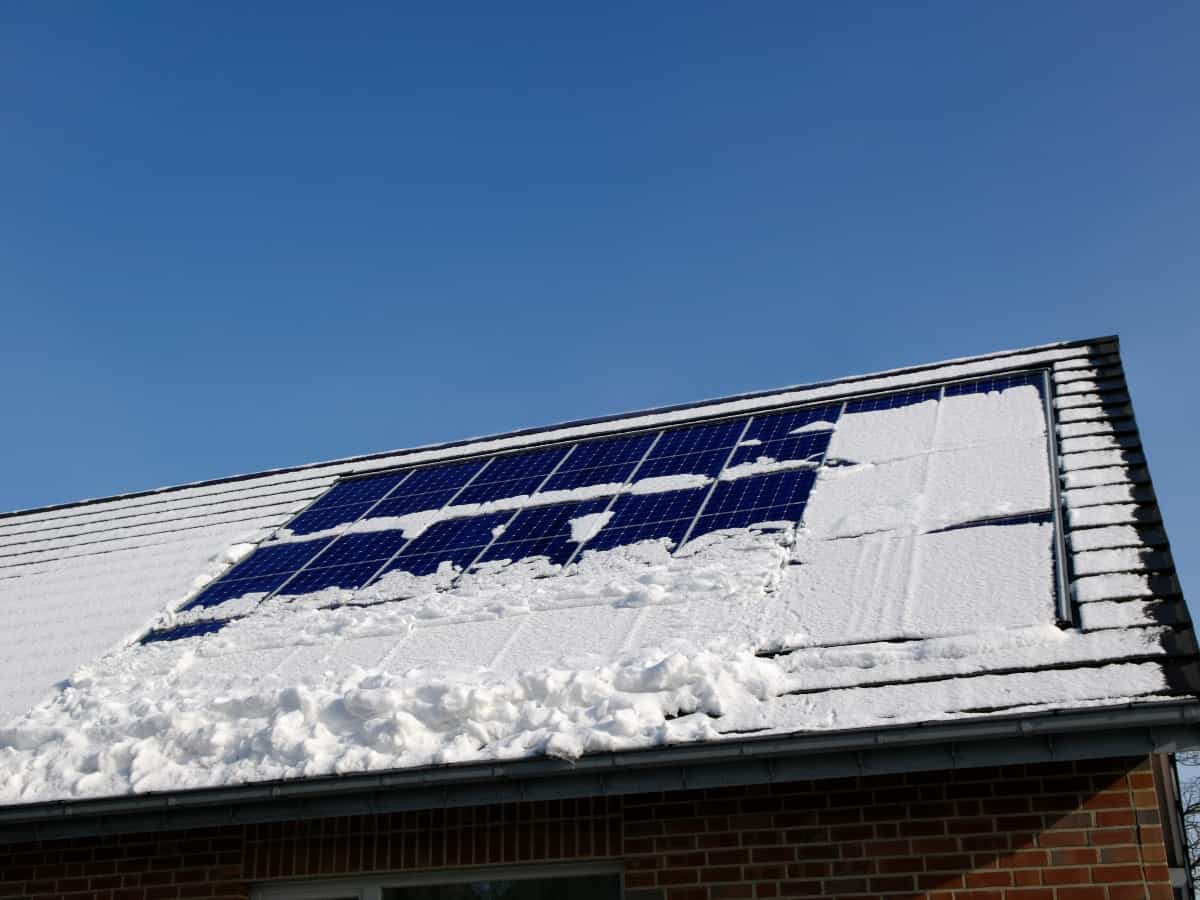The use of solar energy is becoming indispensable as technology advances. In 2019, the global solar battery market was worth 113,4 million dollars, with a forecast of $360.4 million by 2027. If you run on solar energy in your home, you might ask yourself whether a solar battery backup is necessary. Worry no more; you’re in the right place.
It might seem like an unusual purchase at first, but you may need it to go entirely off-grid. In addition, there are many types of solar battery backups on the market. Therefore, it’s important to know your needs before investing in one.
Discover Energy Audits with Solar Energy and ONIT Home
Try our Free Energy Audit to make sure your home is performing at optimum energy efficiency. We’ll inspect every nook and cranny of your home to make sure it’s best serving your needs. We’ll also give you tips on lowering your energy bills, conserving energy, and creating a more efficient space. To learn more about how we can help you maintain a top performing home, visit us online to get started!
What Is the Importance of Solar Battery Backup?
Solar battery backups work to store excess power generated by solar energy. Energy is stored in the batteries and then released during a power outage.
With an excellent solar backup battery, you can go completely off-grid and use solar energy as your primary source of power. But, of course, this calls for an effective and efficient backup to run your whole home. If your solar energy system can sustain all your power needs in your home, you’ll be lucky to save yourself from expensive grid power charges. Also, you get to live in a safe environment since you’ll be using clean energy technology.

Features of a Solar Battery Backup
Not all houses have the exact needs, so purchasing an appropriate solar battery backup for your home is crucial. Here are a few things to take into consideration:
Battery Capacity
One of the essential features of a solar battery backup is its size. A solar battery’s capacity is measured by the amount of energy it can store (in Kilowatts). So if you have a lot of power that needs to be stored, you’ll need to get a bigger battery.
Also, when buying the battery, you need to consider how much energy you need to run your home. If you want to power a few appliances, you won’t need a small battery. But if you’re going to go off-grid completely, you may need to stack batteries to create a larger battery bank. You can also stack several solar batteries to increase storage capacity.
Battery Power Rating
You can measure the battery power rating by the amount of energy it can supply over a given period. If your battery power rating is high, it will power more devices and vice versa.
Depth of Discharge (DoD)
The depth of discharge is the maximum percentage of energy that your solar battery can discharge safely without recharging it. It’s important to remember that discharging your battery while it’s already over the DOD rate is not recommended.
Also, over-discharging your battery (deep discharge) can damage it. For example, if your battery is 10kwh and its DOD is 80%, you wouldn’t want to discharge it more than 8kwh before recharging. It’s good to choose a higher DOD rate since it means that you can use it for an extended period before recharging.
Round-Trip Efficiency
Round-trip efficiency is the percentage of energy you get from your battery compared to your charged amount. You cannot discharge the same amount of energy that you had charged. This is because the battery needs to store some power to work efficiently.
Number of Charging Cycles
A charge cycle specifies how many times a battery can go through the complete charging and discharging cycle before it fails or loses its capacity.
Battery Type
There are different solar battery backups on the market today. The most popular power storage technology is:
- Lead-acid
- Lithium-ion
- Nickel-cadmium
- Flow
Lithium-ion is the ideal technology for your home backup since it stores more energy in a smaller space, discharges most of the stored energy, and is more efficient.
Warranty
Like any other electronic battery, a solar battery loses its efficiency the more you use it. Every time the battery completes an entire charge cycle, it reduces its lifespan. It’s common for a solar battery to reduce its ability to keep a charge.
Solar batteries come with a warranty that covers them for a given time. However, the warranty period depends on its brand and model. The more extended the guarantee, the better because it means that your battery will have a longer lifespan. However, the more time you are given for the warranty, the more expensive the battery becomes.

Best Solar Battery Backup for Your Home
Choosing the best solar battery backup depends on your home power needs. Also, consider the above features before buying one.
Tesla Powerwall 13.5 kWh Battery
This is one of the most common battery backups in the market today. With this choice, you get value for your money.
However, you can only buy it with a solar roof or Tesla solar power system. This makes it unpopular for consumers who have already installed these things.
Specs
- Energy Capacity: 13.5 kWh
- On-Grid Power: 5.8kW continuous
- Peak: 7.6kW
- Size: 45.3″ x 29.6 ” x 5.75″
- Weight: 251.3 pounds
- Battery: Lithium-ion
- AC or DC Coupled: AC
- Depth of Discharge: 100%
- Round-Trip Efficiency: 90%
- Warranty: 10 years
- Price: $10,00
Pros
- It has a longer lifespan
- High usable capacity
- Very efficient.
Cons
- Expensive
- Can only stack Prowell Batteries
LG Chem RESU 16H Prime Battery
LG is a popular name in the manufacture of electronics. This is a new generation solar battery backup with high-voltage. It is considered among the cheapest solar batteries because of its functionality and size.
This battery has a modular system structure, aluminum housing IP55, and RS485 & CAN communication.
Specs
- Energy Capacity: 16 kWh
- On-Grid Power: 7kWh
- Peak: 11kW
- Size: 42.8” x 19.8”x 11.6”
- Weight: 352 Pounds
- Battery: Lithium-ion
- AC or DC Coupled: DC
- Depth of Discharge: 100%
- Round-Trip Efficiency: 97.5%
- Warranty: 10 years at 70% throughput
- Price: $8,500
Pros
- It has a high capacity storage
- Cheaper based on its size and functionality
- It has a DC coupling, making it more efficient
Cons
- It’s more likely to ignite and burn if mishandled due to NMC chemistry.
Enphase Encharge 10 10kW Battery
This is an all-in-one AC-coupled integrated solar battery backup with flexibility in twelve embedded grid-forming microinverters. It uses an enlightened manager and the MyEnlighten app for easy monitoring. It’s reliable, smart, simple, and safe to use in your home.
Specs
- On-Grid Power: 3.4kWh
- Size: 42.13″ x 26.14″ x 12.56″
- Weight: 341 pounds
- Battery: LFP technology
- AC or DC Coupled: AC
- Depth of Discharge: 100%
- Round-Trip Efficiency: 96%
- Warranty: 10 years warranty
- Price: Between $8,500 and $9,000
Pros
- It switches your home into off-grid mode since it can automatically detect a grid outage
- Enables the direct integration of generators
- It’s resistant to high temperatures and humidity
Cons
- It has low on-grid power

Generac PWRcell 18kwh Battery
Generac PWRcell is a Whole Home solar Backup with a Single Battery Cabinet. This type of power storage offers 18 kWh usable capacity. In addition, it comes with an “Outdoor Rated” battery cabinet for indoor or outdoor storage.
Specs
- Energy Capacity: 18kWh
- On-Grid Power: 6.7kWh
- Peak: 9kWh
- Size: 22″ X 10″ X 68″
- Weight: 441 Pounds
- Battery: Lithium-ion
- AC or DC Coupled: DC
- Depth of Discharge: 84%
- Round-Trip Efficiency: 96.5%
- Warranty: 10 Years
- Price: About $18,000
Pros
- Offers high power rating and capacity
- Use Smart Management Modules to manage power distribution
- It can back up your whole home
Cons
- The DOD percentage is on the lower side
- It’s expensive
SimpliPhi accESS 15.2kwh Schneider
This is a fully integrated energy storage with an intelligent management system. It utilizes a lithium Ferro Phosphate (LFP) battery technology. It’s a reliable, durable, and highly scalable power solution. SimpliPhi accESS stores electricity, solar, diesel/gas, generators, wind, the grid, or any combination. In addition, it is flexible, and you can add additional enclosures to increase your power bank.
Specs
- Energy Capacity: 15.2kWh
- On-Grid Power: 4.8KWh
- Peak: 7.6kWh
- Size: 76″ *29.5″ *20″
- Weight: 944 pounds
- Battery: LFP
- AC or DC Coupled: DC
- Depth of Discharge: 100%
- Round-Trip Efficiency: 98%
- Warranty: 10 years with a 2-year workmanship and materials warranty
- Price: Between $23,000 and $29, 000
Pros
- It allows for connections of various storage units
- It’s optimized to auto-start in case of a grid power outage
Cons
- It’s heavy

Top 5 Solar Power Companies
The best way to get a high-quality power backup is to choose from widely known companies. Here are some of the companies:
1. SunPower: SunPower is among the most popular solar companies in the United States. Its solar panels are more efficient than other panels on the market. Its net worth as of March 01, 2022, is $3.1B.
2. SunPro: Sunpro is a solar panel installation company, and it has helped over 30,000 to switch to solar energy. It has an annual revenue of is currently $334.4M. SunPro has become a part of the ADT family to reach millions of people nationwide.
3. Tesla Energy: Tesla provides the best solar battery backup with an aesthetic design to suit your home. Its revenue was at US$2.79 billion, with a production of 3.99 GWh batteries, in 2021.
4. First Solar: First Solar manufactures solar panels and leads in the global manufacturing and supply of PV technology, and has headquarters in Tempe, Arizona, US. Its revenue for 2021 quarter three was 584 million US dollars. By 2019, First Solar had deployed over 17 GW globally.
5. Generac Holding: Generac is the number one manufacturer of home backup generators. It was founded in 1959 and now has over 6,000 employees. Its net sales for 2021 third quarter was 943 million US dollars. Its PWRcell’s technology captures and stores electricity from solar panels on the electrical grid.
Go Green with ONIT Home
Ensure that you know the amount of power you need to run your home before buying a solar battery backup for your home. Check the warranty, Depth of Discharge(DOD), Round-Trip-Efficiency, power, and battery capacity to get the best fit for your home.
You can involve experts in setting up your solar backup system or if you want to build an off-grid solar system. At ONIT home, the solar power system is our specialization. Our dedicated staff is always available to help you meet all your solar power needs.
You can contact us for more information through our website or call us at 1-833-433-0331. For all your solar power needs, we’re ONIT.



